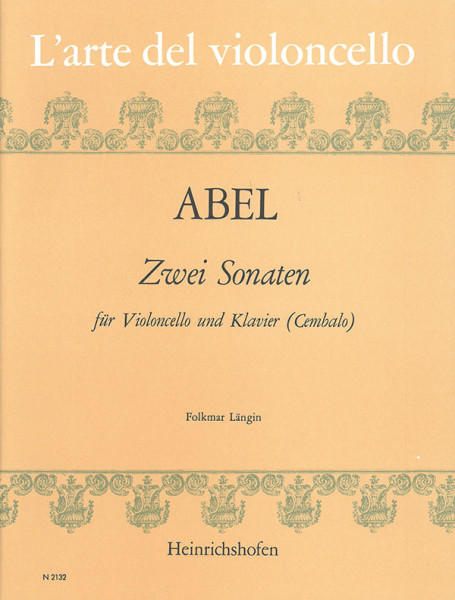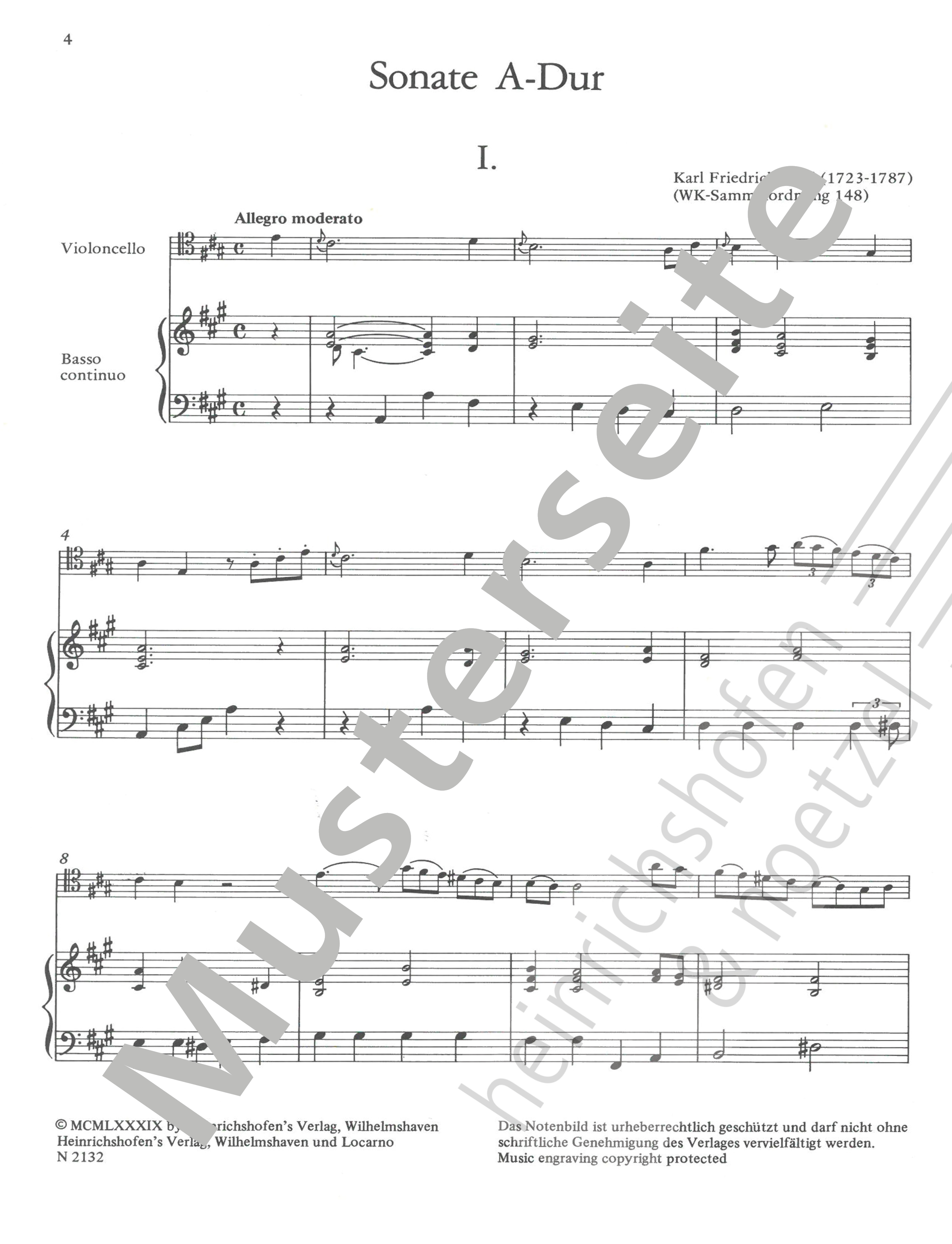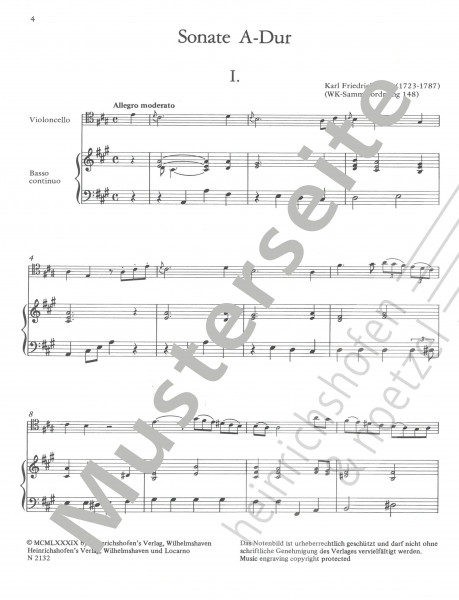Composer: Karl Friedrich Abel
Two sonatas
Violoncello and piano (hapsichord)
- Order No. 2132
- ISMN: 979-0-2044-2132-9
- Number of pages 24 Seiten + 2 Stimmen
- Year of publication 1989
- Kind of publication Score and Parts
- Instrumentation Violoncello und Klavier
- Editor Längin, Folkmar
- Level of difficulty easy to medium
Karl Friedrich Abel (1723-1787) is regarded in music history as ‘the last musician who treated the viola da gamba with happiness and favour’ (quote from Goethe's 8th book ‘Dichtung und Wahrheit’). His acquaintance with Johann Christian Bach is also well known. Together they founded and conducted the London Bach-Abel concerts from 1764-1781. The fact that he also turned to the violoncello in later years has been almost completely ignored in music research. The two sonatas presented here (presumably composed in Berlin in 1782) are taken from the Abel Complete Edition by Walter Knape (published by Ad Portam, Cuxhaven).
The two sonatas are undoubtedly early classical cello music, as can be seen from the outward appearance of the clef. In the G major sonata, the usual three movements are followed in a formally particularly appealing manner by a minor-key Romance as the fourth movement (with diminished octaves in bars 10 and 14), which leads into a folk-song-like major-key movement in 6/8 time and thus concludes the sonata in G major. The Adagio of the A major sonata features an original cadenza with high harmonics, which was a new playing technique at the time and is an attractive introduction to classical cello technique (Boccherini, Romberg, etc.) for today's cellists. The bass accompaniment is unfigured, so that the early classical piano writing can be played just as well on the harpsichord as on the fortepiano. The violoncello part has been precisely marked by the editor.
Content:
II. Sonate A-Dur (WK-Sammelordnung 148)
- Allegro moderato
- Adagio
- Rondeau
- Romance





